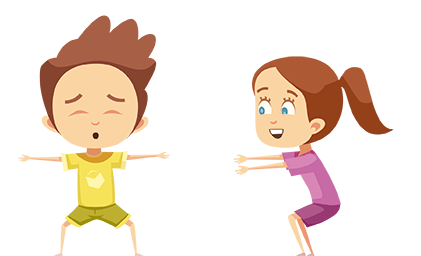
CrossFit for Kids and Teens
Physical fitness is important for people of all ages, including kids and teenagers. CrossFit, a popular exercise program designed to improve overall fitness and enhance performance, has gained recognition as a suitable option for children and teenagers. This article will discuss the benefits of CrossFit for kids and teens, its key components, safety considerations, and how to get started.
Benefits of CrossFit for Kids and Teens
1. Improved Physical Fitness: CrossFit workouts incorporate various movements and exercises that can enhance overall physical fitness, including strength, endurance, speed, agility, and flexibility. This can contribute to better performance in sports or other physical activities.
2. Enhanced Mental Health: Engaging in regular exercise has been linked to improved mental health in people of all ages. CrossFit for kids and teens can help reduce stress, increase self-confidence, and promote a positive body image.
3. Fun and Engaging: CrossFit workouts are designed to be enjoyable for participants. With its combination of different exercises and challenges, it can keep kids and teens motivated and engaged, making it more likely for them to stick to a regular fitness routine.
The Components of CrossFit
CrossFit workouts typically involve a combination of cardiovascular exercises, weightlifting, and bodyweight movements such as push-ups, squats, and pull-ups. The program is designed to be scalable, making it suitable for children and teenagers of different fitness levels.
It is important to note that CrossFit for kids and teens focuses on age-appropriate exercises that do not involve heavy weights or excessive intensity. Safety is a priority, and workouts are tailored to match the developmental needs and abilities of young individuals.
Safety Considerations
When introducing CrossFit to kids and teenagers, it is essential to prioritize safety. Some key safety considerations include:
Qualified Coaches: Ensure that the CrossFit sessions are led by certified coaches who have experience in training kids and teenagers.
Proper Warm-up and Cool-down: Always start with a suitable warm-up routine to prepare the muscles and joints for exercise, and conclude with a cool-down session to aid recovery and prevent injury.
Age-Appropriate Programming: Make sure the workouts are tailored to suit the specific age group and their physical abilities. Avoid exercises that are too advanced or high-impact for their development stage.
Supervision: Ensure that kids and teens are supervised at all times during CrossFit sessions to prevent accidents or injuries.
Proper Technique: Emphasize the importance of maintaining proper form and technique in all exercises to avoid strain or injury.
Getting Started with CrossFit
If you’re interested in introducing CrossFit to your kids or teenagers, here are a few steps to get started:
Research Local CrossFit Gyms: Look for CrossFit gyms or trainers in your local area who offer programs specifically for kids and teenagers.
Visit and Observe: Before signing up, schedule a visit to the gym and observe a CrossFit session to gauge the environment and suitability for your child.
Speak with Coaches: Have a conversation with the coaches and express any concerns or questions you may have regarding the program.
Evaluate Safety Measures: Assess the safety measures put in place by the gym to ensure the well-being and supervision of young participants.
Start Slowly: Begin with a few introductory sessions to allow your child to get accustomed to the exercises and gradually build up their fitness level.
Set Realistic Goals: Encourage your child to set realistic goals and track their progress over time. This can provide a sense of accomplishment and motivation.
Monitor and Encourage: Keep a close eye on your child’s experiences and progress, providing motivation and support along the way.
Conclusion
CrossFit can be a great way for kids and teenagers to improve their overall fitness, have fun, and develop positive habits for a healthy lifestyle. By following appropriate safety guidelines, finding qualified coaches, and introducing the program gradually, parents can support their children in reaping the benefits of CrossFit.